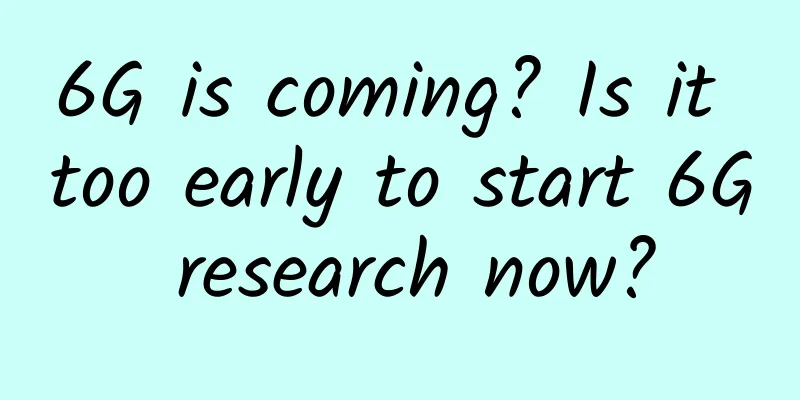In the global 5G competition, who will be the ultimate beneficiary?

|
Leifeng.com: To understand cellular technology, you must first understand that mobile phones, personal hotspots, and other cellular devices are based on complex two-way radios. Now that radio spectrum has become a major topic in the 5G era, some technology companies are happy to popularize and share 5G spectrum knowledge with more people. Dean Brenner, senior vice president of spectrum strategy and technology policy at Qualcomm, has been a leading advocate for improving global mobile spectrum availability. Last week, he accepted an interview with VentureBeat to unveil the mystery of 5G spectrum for readers. Leifeng.com compiled the interview without changing the original meaning. The following is a transcript of VentureBeat’s interview with Dean Brenner: Q: Understanding spectrum knowledge is a must-have skill for wireless engineers, but most end users don’t understand it or know its importance. Can you give readers an easy-to-understand explanation? A: Simply put, spectrum is the cornerstone of wireless technology. Whether it is the radio in our mobile phone or the radio in the car, they all have different frequencies; when we switch from one radio station to another, we are actually switching between different frequencies; the same is true when the mobile phone switches radio stations. In addition to being used in radios, some radio spectrum is specifically used for communications. For example, when our mobile phones make calls, the signals are transmitted through a specific spectrum. However, at first, only one spectrum was used for mobile phones; with the advent of the 1G and 2G eras, the available spectrum began to increase; and as communication technology developed to 3G and 4G, the spectrum increased significantly. As a chip manufacturer, we have also made a lot of investments and R&D to ensure that our chips can work on all different frequency bands and that they can be used in various countries around the world. Leifeng.com Note: Image from Transportation.gov Q: We all know that many 5G phones now support millimeter waves. In addition to this, are there any other dynamics in radio waves? A: Any new communication technology starts with new spectrum. Therefore, we often communicate with the FCC (Federal Communications Commission), spectrum regulators around the world, and Qualcomm's global operators so that we can discover new spectrum and then apply to the regulator to develop and utilize this new frequency band and launch new technologies. In the past, new technologies could not be directly migrated to existing spectrum bands unless the spectrum bands of existing technologies were cleared. For example, we could not directly start 4G in the 3G band unless users gradually switched from 3G to 4G until the 4G band had a large enough usage rate, and then reset the 3G band and transplanted 4G technology into it. This process is also called "band recultivation", just like planting tomatoes on a piece of high-quality land. If you want to plant corn, you have to wait until the tomatoes are harvested. However, this situation has changed in the 5G era - a technology called DSS (Dynamic Spectrum Sharing) has been introduced; if the base stations in a fixed area support this technology, the 4G frequency band in this area can run 5G. Mobile phones equipped with Qualcomm's second-generation 5G chips can also implement this technology. In fact, it would have taken a decade to realize DSS technology, but we have made great progress ahead of schedule; this means that all existing frequency bands below 6GHz have good coverage, which will enable 5G to spread at an extremely fast rate. Q: In the past four generations of communication technology, consumers generally did not pay attention to spectrum issues because mobile phones were either "4G" or not; however, now consumers are very concerned about the impact of low, medium and high frequency spectrum on 5G devices, just as operators use terms such as "5G" and "5G+" to distinguish the two key types of 5G spectrum to consumers - medium-range medium-speed spectrum below 6GHz and short-range high-speed millimeter wave spectrum. Do you think this development is positive or negative? A: I remain neutral on this because I don't know how the marketers of the operators explain these concepts to ordinary consumers, so I should be humble when answering this question. However, I have to admit that everyone wants to enjoy the world's best connection technology, and no one will say, "5G network is fast, but I don't need it." Unlocking new spectrum is a key part of achieving this goal. Leifeng.com Note: Image from Korea Telecom Q: So far, the transition to 5G networks seems to be going smoothly; however, we have heard that you disagree with the idea of a “race to 5G,” which is, to some extent, motivating policymakers. What do you think of this? A: I always think that the "5G race" is a good metaphor; the reason I object to this statement is that it emphasizes the order of precedence, implying that the first place is the first, and the lower the ranking, the more unlucky and disadvantaged. In fact, this is not the case - we don't want there to be only one winner in the world, but we hope that everyone in the world can use 5G as soon as possible, and everyone can pass the level smoothly as a winner. In addition, I am also worried that people will label countries or regions because of this concept, such as second, third, etc. But from another perspective, this is indeed a competition, it is more like a 100-meter sprint; currently, countries in four continents have entered the finish line, and we are very happy to see the rapid development of 5G around the world. However, the deployment of new wireless technology is an ongoing process. Mobile phones equipped with Qualcomm's first-generation 5G chips have been launched, the second generation is in production, and the third generation is under intensive discussion; all of this shows that the development of 5G is not a static one-time event. If you have to compare this to a race, it is more like an eternal race with no beginning and end. Q: Considering our current international situation, some small countries in the Middle East launched 5G networks very early, but there is no corresponding equipment to sell. At the same time, Russia, India and some European countries are also slowly moving towards the 5G era. What happened to those countries that are not leading in 5G, and what is the reason? A: I’m not going to comment on Russia for a variety of reasons, but in previous generations of communications, the people responsible for spectrum issues had to spend a lot of time and effort convincing regulators that it was important for their country to take the lead in 5G deployment. Since the concept of 5G has gradually attracted global attention, I have also worked with governments around the world on it. However, I have never emphasized the importance of 5G to regulators, nor have I emphasized that it is one of the factors driving world economic growth. In fact, everyone understands that 5G is important. Even from the perspective of the government, it is an instinctive idea to stay ahead in the "5G race"; however, in the process of promoting 5G, it is inevitable to encounter some practical problems - governance issues between countries/regions, and other issues; therefore, I don't think there is any government in the world that is unwilling to let its citizens enjoy 5G as soon as possible. Q: So this is more of a bureaucratic question. A: Yes, but the solution to this problem will vary depending on the actual situation in each country. Q: So, has the government's attitude toward millimeter wave changed? Has the pace of approval slowed down? A: I think millimeter wave is moving at full speed. The European Commission made a Europe-wide ruling on the 26GHz millimeter wave band (Leifeng.com (official account: Leifeng.com) Note: The EU officially announced last month that the 26GHz band will be used for 5G services, paving the way for Europe to use 5G millimeter wave), which was expected, and we are very satisfied with the progress of things. Moreover, everyone in the industry, especially the operators, hopes that 5G devices and 5G networks can be put in place as soon as possible. After all, they have invested billions of dollars in this. I admit that Qualcomm is also happy to see such a rapid development of 5G, but we are not entirely dependent on this business. Q: Looking back at previous generations of mobile phones, each generation had a macro goal, which was to become a "world phone"; in other words, no matter what mainstream network standards a country adopts, this phone can work properly and operate anywhere in the world. Is this goal easy to achieve under the 5G network? A: You're right, everyone wants this phone. In fact, we can basically do this with 4G networks now; I can't tell you when this goal will be achieved in the 5G era, but it is definitely a common goal of the wireless industry. Q: Is there a phone that can receive sub-1GHz, sub-6GHz, and millimeter wave signals at the same time, or can be tuned to work on those frequencies? A: Good question. Currently, we support sub-6GHz and millimeter wave frequencies on the same Qualcomm 5G chip. Q: So a pocket-sized device would contain the necessary antennas to receive signals from 600MHz to 28 GHz or 39GHz? A: Yes, it is certainly possible. We invented small antenna modules that consist of 7 to 8 antenna elements; and the first 5G phones using Qualcomm technology have multiple such modules, and these phones are powerful enough to do this; for the second and third generation chips, more complexity is added through operator aggregation. But we still need to work hard to make the phone support all the traditional 4G bands and the new 5G bands. Q: One last question, can you provide further clues about what Qualcomm's third-generation 5G chips will bring? A: The third-generation chip has not been released yet, and we like to surprise everyone, so more details may be discussed in October, so stay tuned. This article is reproduced from Leiphone.com. If you need to reprint it, please go to Leiphone.com official website to apply for authorization. |
>>: VIAVI attended the 19th China Optical Network Symposium and China FTTH Forum
Recommend
Sharktech Spring Promotion: 10Gbps unlimited data/Dual Gold 6148/256GB/2*2T NVMe/starting from $329/month
The old merchant Sharktech has just launched a sp...
What does 5G mean for enterprise business?
Mobile 5G networks promise to be the bridge to In...
Who will be the Internet of Things "giant"? 2017 World Internet of Things Expo closed
【51CTO.com original article】 On September 13, 201...
The 5G coverage of the three major US operators was accused of false advertising: Verizon can only be connected 9.7% of the time
5G communication networks are reportedly faster t...
Important factors of data center energy efficiency: latent heat and sensible heat
Talking about the PUE value of data centers has a...
PON is not just about “breaking” the network!
Have you ever complained in your heart about &quo...
CUBECLOUD New Year promotion cloud server 25% off, Los Angeles CN2 GIA/Hong Kong CN2 GIA route optional
CUBECLOUD has launched a limited-time promotion d...
CN2 GIA limited package replenishment for BandwagonHost $46.6/year, optional DC6/DC9/Japan SoftBank, etc.
Bandwagonhost has restocked its limited edition a...
In the interview, I was asked how the reliability of TCP is guaranteed?
We know that TCP is reliable. Our previous articl...
From January to May, my country's telecommunications business revenue totaled 612.7 billion yuan, a year-on-year increase of 6.7%.
[[407105]] On June 23, according to the "Eco...
Starlink banned from service in India until it gets internet license
SpaceX hasn't always received a warm welcome ...
Ubuntu 18.04 changes the IP address
My memory is getting worse and worse, just record...
5G is gaining popularity, is artificial intelligence going to be "left out"?
In 2018, the popularity of 5G began to rise rapid...
#Has run away#Limewave: $12.9/year KVM-1GB/15GB SSD/3TB/Seattle data center
【Attention】This merchant has run away!!! Limewave...
Wi-Fi 7 is on the way, how powerful is it?
In 2019, Samsung and Apple were the first to intr...


![[Black Friday] HostHatch: $29/year-dual-core/4GB/50G NVMe/5TB/1TB/Los Angeles and other data centers](/upload/images/67cabcd4e97ee.webp)






